Meet RBA Governor Michele Bullock: Australia’s new financial power
The new RBA boss breaks with tradition in many ways. Can she deliver a rebuild of the nation’s central bank while keeping the economy afloat?
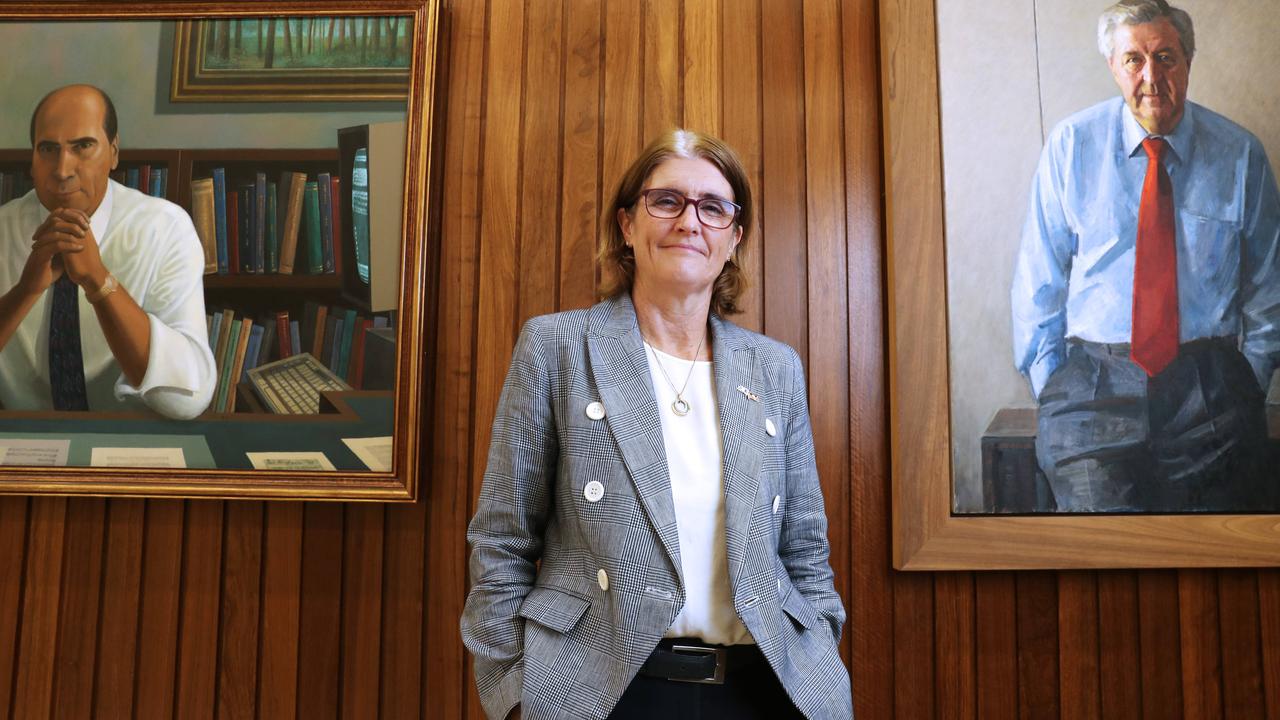
Business
Don't miss out on the headlines from Business. Followed categories will be added to My News.
It is increasingly likely that Michele Bullock’s first big call on the direction of interest rates will be to cut them.
However that’s not going to come for some time, potentially mid-next year, if market betting is right. But it is enough to give the new Reserve Bank of Australia governor the room she needs to undertake the most ambitious overhaul seen at the central bank in decades.
For Bullock, the former Armidale High maths student who opted against a career in medicine, the changes she is set to steer through also stand to significantly diminish the power of the RBA governor as well as the institution of the internationally regarded central bank.
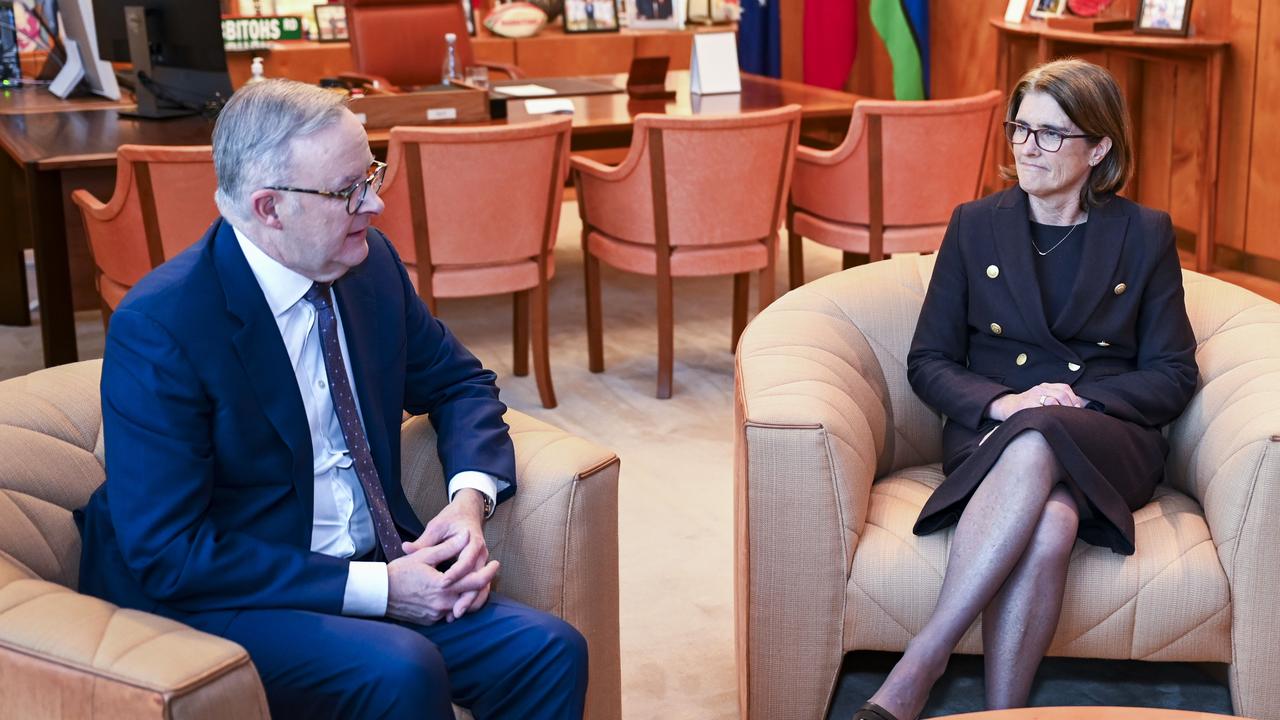
The 60-year-old Bullock on Monday will become the governor of the RBA as well as Australia’s first female central bank governor. She also joins the ranks of just a handful of the world’s female central bank bosses, including Europe’s Christine Lagarde, with central banks dominated by men across the top levels.
“She is very straightforward and extremely honest. She is very highly principled,” former RBA governor Ian Macfarlane and one time boss tells The Weekend Australian. “She’s a person that all the people who work with her have a great respect for”.
After a politically charged process, Treasurer Jim Chalmers in July named Bullock as just the ninth governor of the RBA. That announcement also meant that RBA boss Philip Lowe was denied an extension to his seven-term after he had pushed through some of the most aggressive cash rate rises in decades.
The rate hikes, coming over a period just 13 months, were aimed at combating inflation that was tearing through the economy following the unprecedented financial stimulus of the Covid-19 pandemic.
Bullock was chosen to run the bank ahead of two external candidates: Treasury Secretary Stephen Kennedy, who also sits on the RBA board alongside Bullock, and former RBA staffer and Department of Finance chief Jennifer Wilkinson.
RBA insider
Bullock, who is stepping into a $1m-a-year job, is a RBA “lifer”, joining nearly 40 years ago as an analyst under the intern program, and has risen through the ranks across payments and overseeing printing and remaking of the polymer banknotes. Her elevation to the top job follows only a brief stint as deputy – she was promoted to deputy a little more than a year earlier. Although she had been assistant governor for more than a decade, sitting on the bank’s top executive team across operational roles.
Bullock has come through the financial system side of the RBA, contrasting to her three predecessors who were elevated to the top job after heading up the bank’s influential economic forecasting arm.
However Bullock’s deep understanding of the RBA’s mechanics is now seen as an advantage as she implements the recommendations of the Chalmers-backed review of the central bank that released its final report in April.
“She knows what she doesn’t know, that’s always a good thing to have,” says one person who has closely worked alongside Bullock. “She’ll rely on the people where she needs to rely on people and not think that she knows the answer”.
“But the biggest challenge is that it’s now on her to make the big calls”.
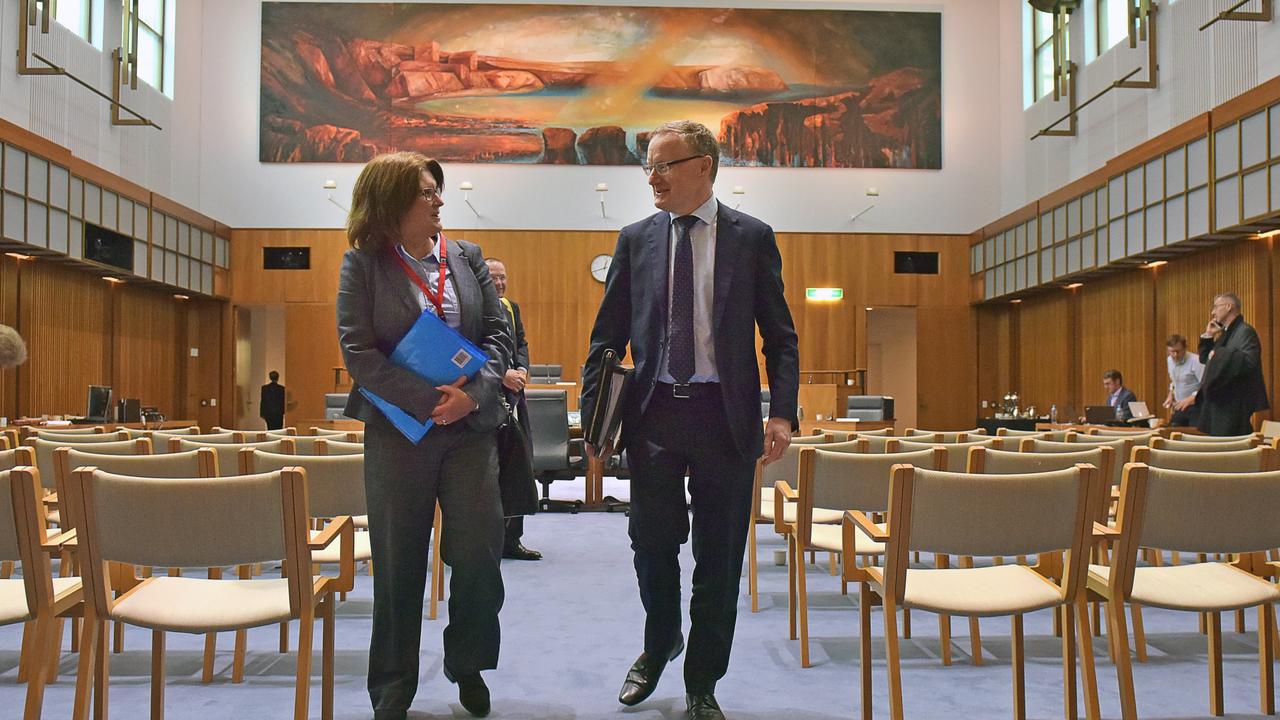
Lowe certainly made the big calls and copped a barrage of criticism and political sniping for them. This ranges from aggressively raising the cash rate to 4.1 per cent after it was sitting at almost zero for longer than needed through the Covid pandemic. At the same time Lowe came under fire for wandering outside his lane as politicians saw it, criticising areas like infrastructure gaps, lagging productivity as well as fiscal policy. This made him a big target when the public mood was turning against the bank.
Despite his tenure coming to an end, Lowe has strongly endorsed – both publicly and privately – Bullock’s promotion as RBA governor. The two have a high regard for each other and it reinforces his decision to name her as his deputy. It also keeps critical continuity inside the bank after a wild period that included a global pandemic, near zero rates, a probing review and an accounting quirk that resulted in the central bank last year delivering a thumping loss of nearly $37bn.
Indeed those inside the bank regard Bullock as a “stabilising force” following one of the most dramatic periods of the RBA’s modern history. So too Bullock is expected to oversee through some of the more ambitious changes called for in the RBA review while still keeping the heart of the central bank intact.
‘Country girl’
The low-profile Bullock breaks the central banker mould in many ways. She sits on a multimillion-dollar property portfolio she shares with her husband, with two investment properties as well as her family home in a waterfront suburb of Sydney’s inner-west.
Her two adult children live outside of the cities in regional Australia.
She doesn’t own any shares directly. She is a member of the Chief Executive Women’s network and disclosures show Qantas has given her a complimentary membership of the chairman’s lounge. And that’s about it.
Those who have worked alongside her describe Bullock as pragmatic, level-headed but importantly for a central banker she is regarded as a reasoned and clear communicator. This has been noticeable in the tough parliamentary hearings where she has joined Lowe over the past few years.
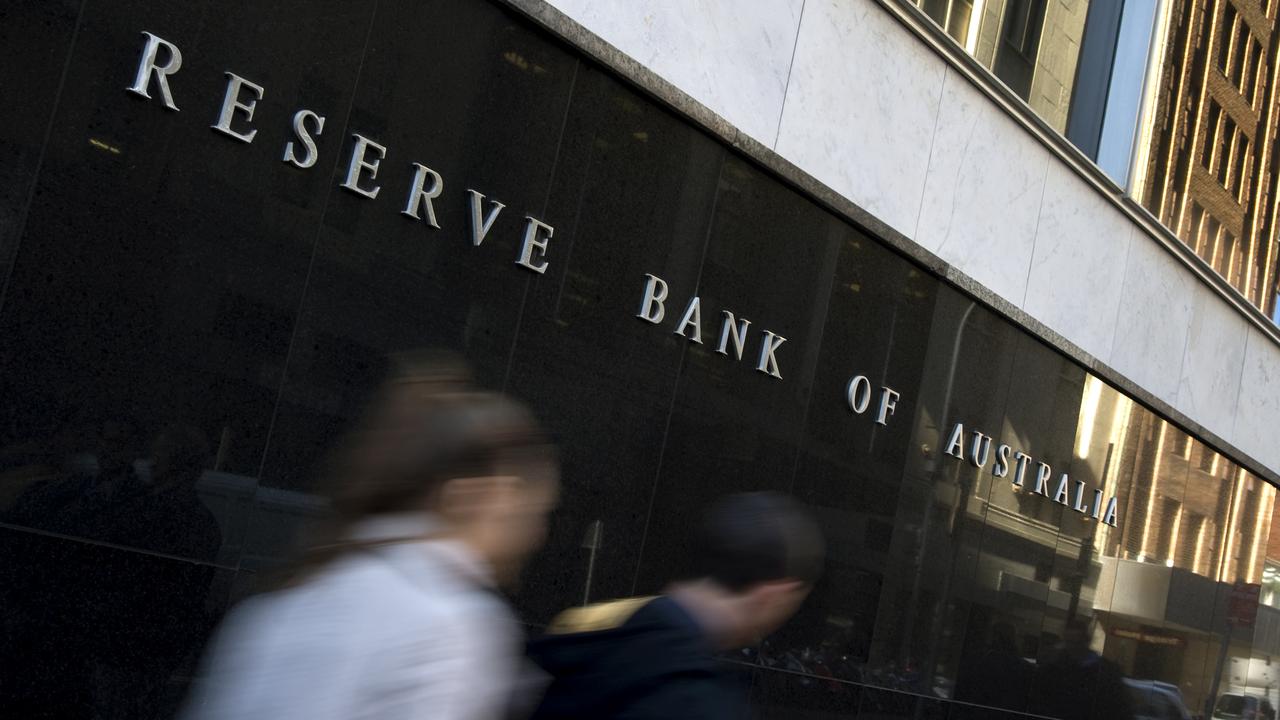
Bullock was born in Melbourne and moved to Armidale when she was nine after her father took a job with the University of New England. She went to Armidale High School (now called Armidale Secondary College) and while she was accepted into medicine at the University of NSW – she later confided she wasn’t cut out for it and instead opted for economics at the UNE in the early 1980s.
Bullock too marks the second RBA governor to have come through the economics program at UNE, with Bernie Fraser – who served under the Hawke-Keating years – also a graduate of the same northern NSW university decades earlier.
Until now and partially due to her operational roles, Bullock has kept out of the public eye, (she declined a request for an interview before taking charge of the bank), but in a Q&A with the UNE alumni magazine Connect earlier last year after being promoted to deputy governor she described herself as a “country girl”. She also revealed she opted for economics after finishing high school given the idea of going to a big city to study was daunting.
“I found economics interesting; it was useful in day-to-day life and topical, and it had a quantitative element that suited me,” she told the magazine.
Growing up in the country was a real leveller, she added.
“It wasn’t about where you came from or who you were, it was about what you were contributing, like to the sporting teams you were playing in. It was a really welcoming environment. That’s what I try to bring to what I do.”
‘Tough issues’
Bullock joined the RBA in 1985 as an intern in her honours year and from there she was put on the fast track, including being sent to the London School of Economics (regarded as a more liberal leaning school among economists) to complete her masters.
However, given her most prominent roles have been outside economics, few have a real read on whether the new governor is more inclined to be hawkish (keeping the cash rate high) or dovish (cutting rates) than Lowe – who is widely regarded as having dovish instincts.
Bullock has delivered speeches taking in both stances, although most attention came from hawkish comments in Newcastle in June where she said in her prepared remarks an unemployment rate of 4.5 per cent “would be closer to a sustainable balance point” for the economy.
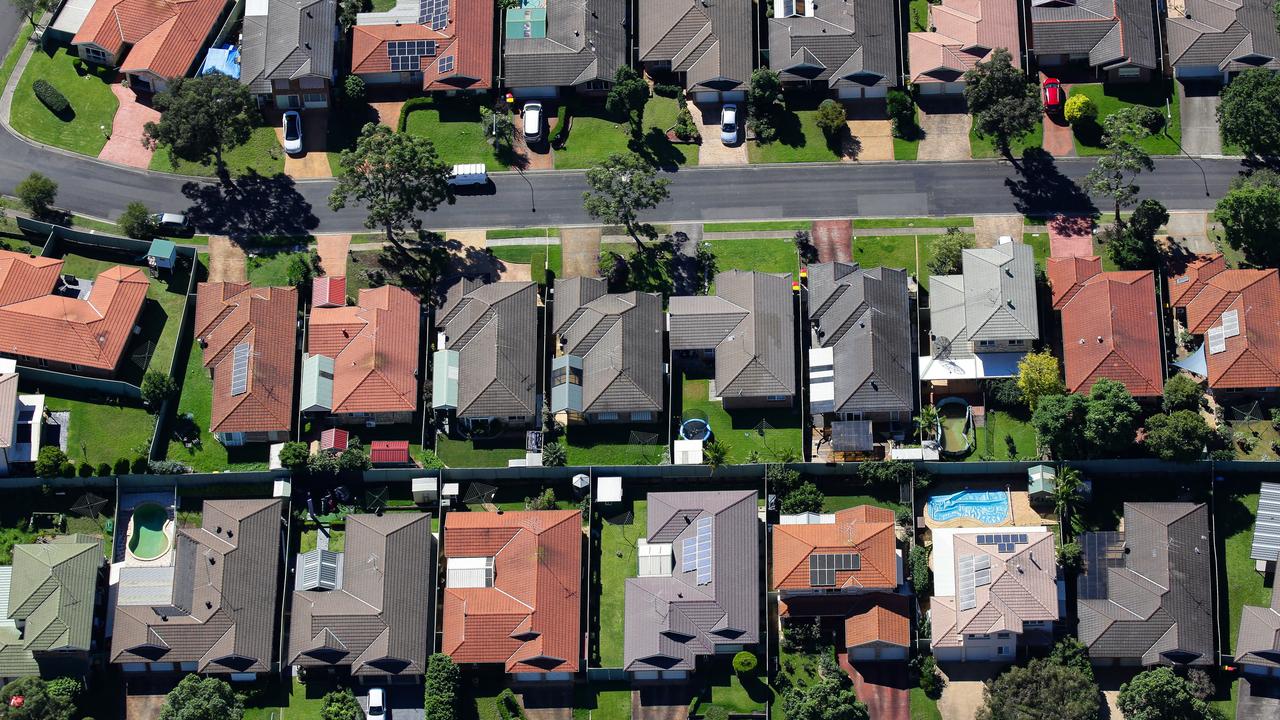
This drew a wave of criticism amid suggestions the RBA was pushing for a higher jobless rate. But Westpac chief economist Bill Evans saw the comments as “courageous enough” that didn’t attempt to sugar coat the truths when it comes to running the economy. Other speeches from Bullock have tackled the RBA’s more unorthodox policy measures deployed through Covid pandemic including yield curve control and quantitative easing.
“She wasn’t moving away from the tough issues and handled it very well,” Evans says. “Every time I’ve come across her she’s a clear communicator. That’s the thing that strikes me”.
Some of her comments have also taken a more dovish bent, suggesting Australia go slower on fighting inflation in order to protect gains in the jobs market.
“In many ways the easy solution might be to have a scorched earth and get inflation back down very quickly…we are aiming to bring inflation back to target with a slightly longer period,” Bullock recently told a forum.
Bank overhaul
However, where the central bank governor stands on rates might be less of an issue under the structure of the new RBA. Among dozens of recommendations coming from Chalmers'’ RBA review is an overhaul in the way that interest rates will be set.
This includes the decision to establish a separate Monetary Policy Board that will make decisions on setting the all powerful cash rate. The board will have six external appointees made up of economists, bankers and even labour market experts that will have an equal vote on the cash rate. This will mean for the first time the majority of the power on interest rate decisions will rest with those from outside the Reserve Bank.
“The whole aim of the Review is to move the RBA board from being an advisory board to being one that proactively shapes monetary policy. So their vote is as powerful as the governors,” Macfarlane says.

This could make the job of consistent communication around the cash rate much more complicated, particularly if the board votes against the RBA governor. It essentially means that Bullock’s ability to anticipate the direction of interest rates will be much diminished, he says.
“That will be a real challenge for anyone,” Macfarlane says. “I have a very high opinion of her and she is very good, but I think Michele is going to have a much harder job than any of her predecessors”.
Westpac’s Evans labels the new structure as a “tough management challenge” with outsiders now having a direct say over the direction of monetary policy compared to the current board.
Elsewhere Bullock will need to steer through the institutional and cultural changes recommended by the RBA review including “fostering an environment to encourage constructive challenge” of viewpoints that can run against the RBA’s public commentary.
The operational running of the bank will be streamlined with the creation of a new chief operating officer role as well as chairing the governance oversight board of the bank. Her immediate task will also settle in a new team. The treasurer will appoint the deputy governor role that she vacates and while Bullock appoints a new head of economics. Current economics head Luci Ellis is set to join Westpac.
Working in Bullock’s favour around all this will be the chance to have some clear air on the economy with Lowe seen as doing nearly all of the heavy lifting on the cash rate. The days of RBA board meetings started to resemble courtroom drama with media and paparazzi camped out the front of the RBA’s Martin Place headquarters as well as Lowe’s house and then there was intense public backlash that followed each hike. Bullock won’t have to deal with this – at least for now.
Peak rate
There is an expectation that rates in Australia have finally peaked, even as other central banks continue to push rates higher. The European Central Bank this week became the latest to raise rates to an highest of 4 per cent. There is a one in four chance of a rate hike in November, although recent GDP figures showing a cooling economy consumer spending slowdown has shown higher cash rates are having the desired effect. The lag effect of the current high cash rate is also seen as needing time to be fully felt. Futures markets are starting to price cash rate cuts from early next year with June firming as a favourite.
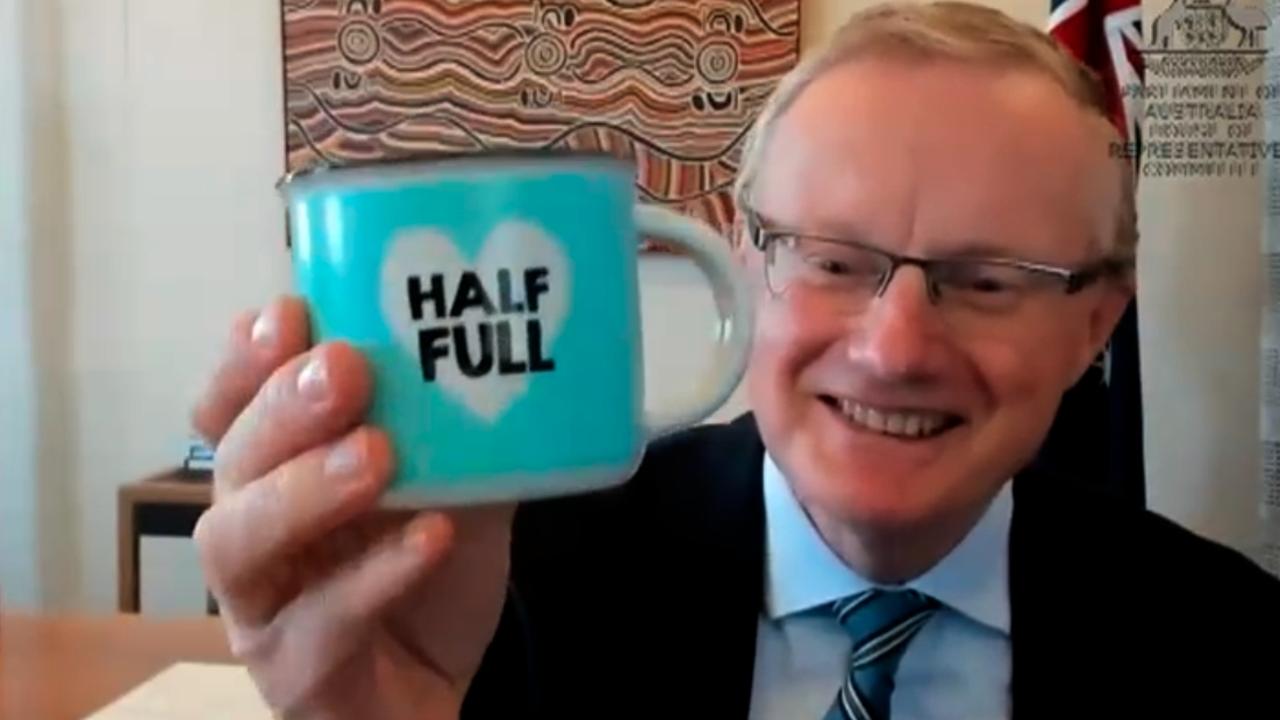
Westpac’s Evans says he doesn’t see a further case for raising rates.
“It would have been a really difficult time to come in as a new governor when the RBA was really active in the past 12 months. So you’ve got to think (Bullock) is going to have about a year to go to clear the decks, get the system working well, until a decision needs to be made about whether you need to change (rates). So that will be a good thing,” he says.
Delivering his final public address as governor in Sydney, outgoing governor Lowe says on his exit ahead of the weekend he planned to regift an office coffee mug that had been gifted to him on taking charge of the bank in 2016. Lowe’s predecessor Glenn Stevens had given him the light blue mug that had the words “half full” printed in big, bold letters on the side.
“Michele, I do so in the hope that as you navigate the uncertainties ahead, you will remember that the glass is indeed half full and that we have a lot to be fortunate about here in Australia,” Lowe told the new governor Bullock.
Originally published as Meet RBA Governor Michele Bullock: Australia’s new financial power









